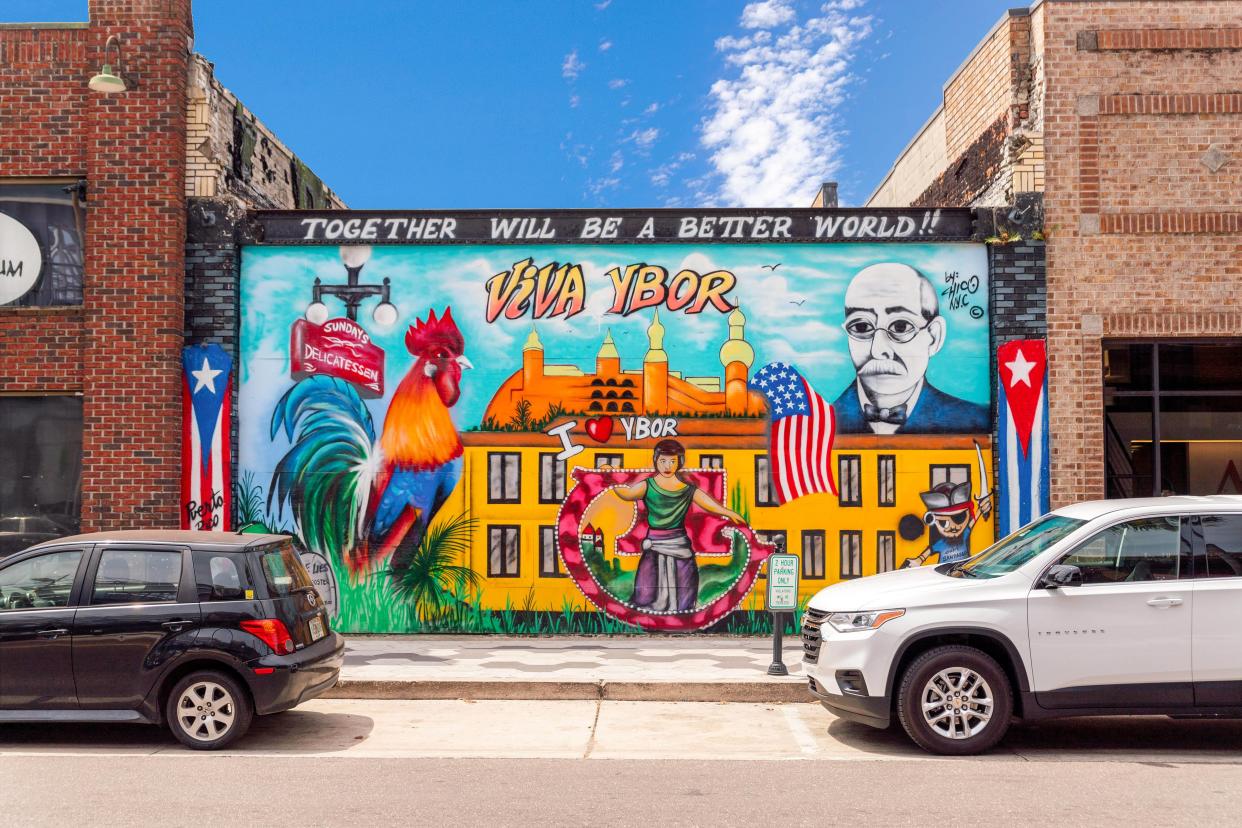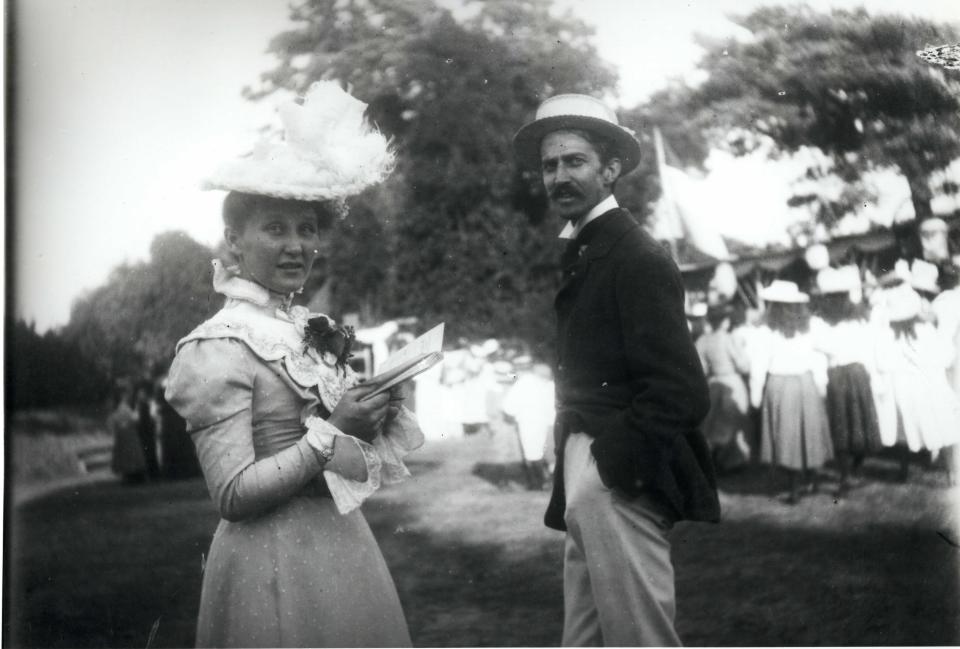Jax History CEO: With its distinct cultural history, LaVilla could be our Ybor City

- Oops!Something went wrong.Please try again later.
- Oops!Something went wrong.Please try again later.
Tampa’s Ybor City neighborhood is a National Register Historic District, established in 1885 by Cuban immigrants, that became the most famous and prosperous cigar-making district in the U.S. By the early 20th century, it justified Tampa’s new identity as the “Cigar City.”
Its employment opportunities attracted a surge of new immigration to Tampa and to Ybor City itself, which was soon populated by Italians, Germans, Jews and Chinese. However, by the mid-20th century, cigarette smoking had decimated the cigar industry, and Ybor’s prosperity waned. In the 1950s and 1960s, second- and third-generation immigrant families moved to the new growing suburbs.
The advent of Interstate 4 and urban renewal programs threatened what was left of Ybor City’s unique architecture and sense of place. Only in the 1990s did a fresh preservation movement gain enough support to foster an urban renaissance, resulting in Ybor’s new life as a destination for visitors and newcomers to Tampa, as well as a dining and entertainment mecca.
Letters: Issues at small Georgia library an example of larger attacks on democracy
In the 21st century, the Ybor City historic district illustrates and helps define Tampa’s metropolitan identity.
Since the late 19th century, the area just west of Jacksonville’s urban core has — like Ybor City — held its own distinctive identity, and experienced a soaring rise followed by a devastating fall. The neighborhood was incorporated in 1869 as LaVilla. Through annexation in 1887, LaVilla became part of Jacksonville, but its distinct, colorful identity thrived.
In the late 1800s and well into the 20th century, LaVilla was the setting of Jacksonville’s richest multi-cultural, multi-ethnic life. Though predominantly Black, it was (by almost any measure of diversity) a visual pastiche of humanity, not to mention a cacophonic operetta to the ear.
Because of its proximity to Jacksonville’s railroad and the riverfront docks, newcomers found LaVilla almost as soon as they arrived. Its several dozen blocks were fertile ground for people to meet others of different races, nationalities, education and cultural tastes. Musicians, artists and authors experienced, absorbed and exchanged new things in an environment where “new” was a daily occurrence.
Two personalities whose paths fatefully crossed in LaVilla help tell its story. With the patronage of travelers by train, as well as that of mariners from the seagoing and river-bound ships that called at Jacksonville, LaVilla’s cafes, saloons, bordellos and clubs prospered. When fishermen and sailors stepped ashore, they had limited time in which to refresh and avail themselves of those entertainments and spent freely in doing so.

Enterprising Jacksonians accommodated them in establishments like the Hotel de Dreme, at the corner of Ashley and Hawk (now Jefferson) streets in LaVilla. Its owner was an unconventional woman named Cora Taylor — striking, prosperous, literate and worldly enough to be at ease in the multinational milieu of gamblers, Spanish spies, newspaper reporters, Cuban rebels, smugglers, seamen and wanderers who populated LaVilla by the 1890s.
Jacksonville was a center of intrigue relating to tensions between the U.S. and Spain over the brewing Cuban revolution. Journalists and writers from across the U.S. and beyond came thirsting for news and drama. One of them was the celebrated young novelist Stephen Crane, whose 1894 novel, “The Red Badge of Courage,” had made him famous.
Taylor met the 25-year-old Crane, then six years her junior, when (newly arriving in town) he appeared at the Hotel de Dreme. The two soon became common-law husband and wife. Crane’s Jacksonville experiences were many and colorful, none more so than his attempt to ship out to Cuba pretending to be an ordinary seaman aboard the steamer Commodore.
The ship departed the St. Johns River at Mayport on Dec. 31, 1896, carrying weapons and ammunition for Cuban revolutionaries. The cargo was illegal, of course, but local officials looked the other way. Barely a day into its voyage, the Commodore foundered and sank, leaving Crane and his shipmates stranded in rough winter seas.
His vivid, 4000-word account of the ordeal became “The Open Boat,” published in 1898 as part of a collection of short stories.
Previous development plans: 'Here is a plan to revive LaVilla'
Stephen and Cora Crane, as she chose to be known for the rest of her life, were just two among the incandescent characters who strode the sidewalks of LaVilla when that community was still in ascendance. Others came from across the nation and overseas, helping to mark Jacksonville as the most important city in Florida and among the most alive, vibrant places in the country. LaVilla was the childhood home of James Weldon Johnson and his brother Rosamond, who became two giants of American cultural life.
LaVilla’s cultural and political life grew more complex into the 20th century, long after Stephen and Cora were gone. He died in Germany of tuberculosis, before his 30th birthday, with Cora at his side. She returned to Jacksonville, where she lived only a few years longer, and is among the 90,000 fascinating citizens permanently resting in Evergreen Cemetery.
Like Ybor City, Jacksonville’s LaVilla peaked by the mid-20th century. Suburban expansion, declining industrial employment, urban renewal and the arrival of interstate highways coalesced by the 1970s, and the weight of LaVilla’s glittering past is hard to discern. To Jacksonville, it may not be what Ybor City is to Tampa, but it doesn’t have to be.
It already is an authentic place for telling some of Jacksonville’s greatest stories, reminding the people of this city and those who come after us what an interesting and engaging place this has been. Its stories are for us to carry forward.

Alan J. Bliss, Ph.D., CEO, Jacksonville Historical Society and History Center
This guest column is the opinion of the author and does not necessarily represent the views of the Times-Union. We welcome a diversity of opinions.
This article originally appeared on Florida Times-Union: LaVilla can help define Jacksonville's metropolitan identity

